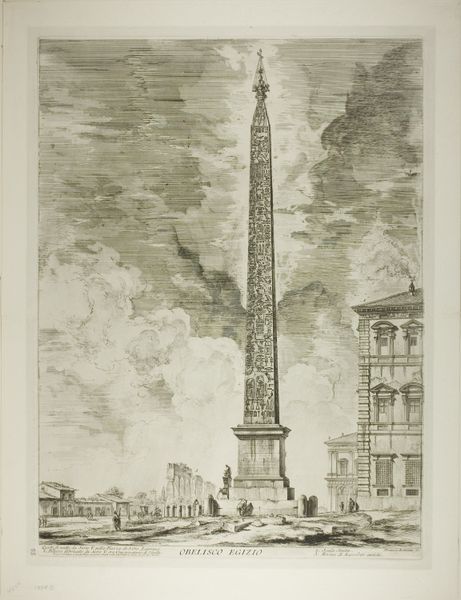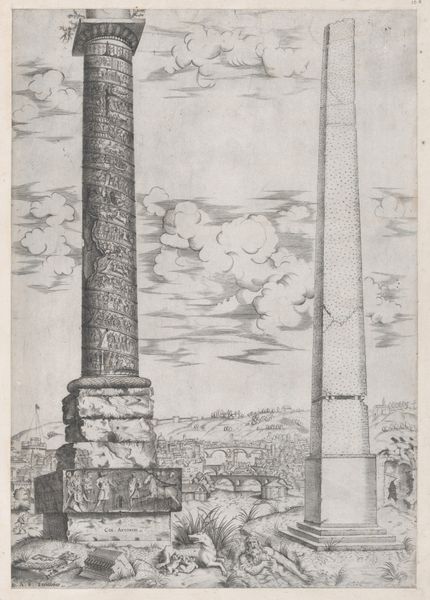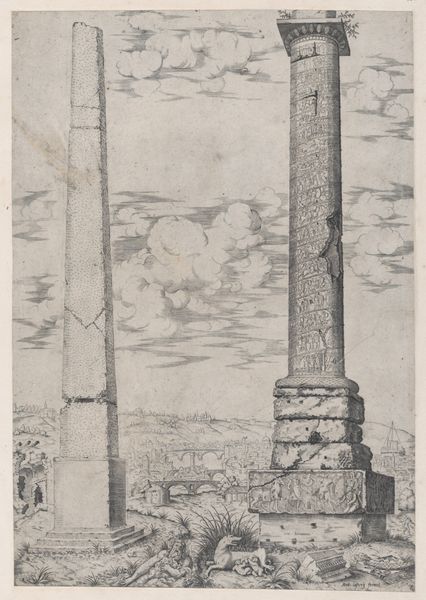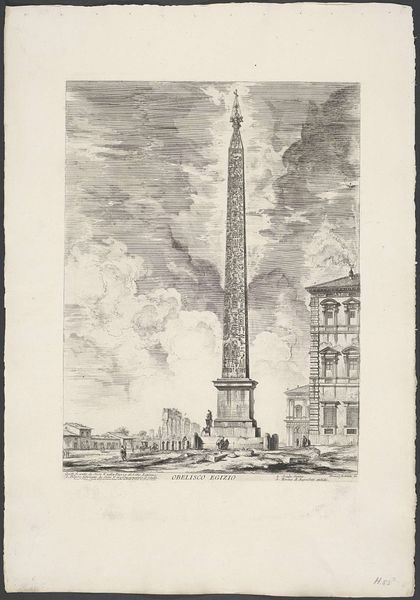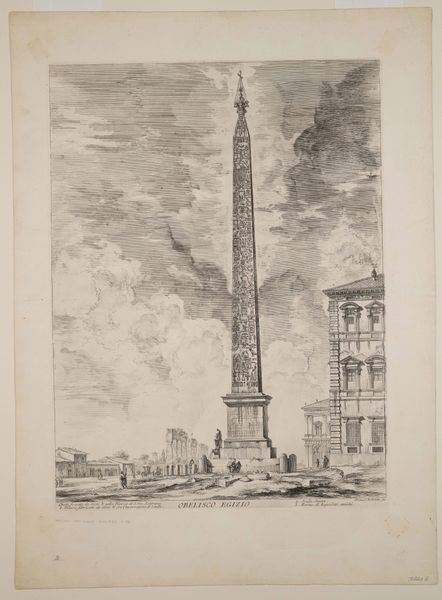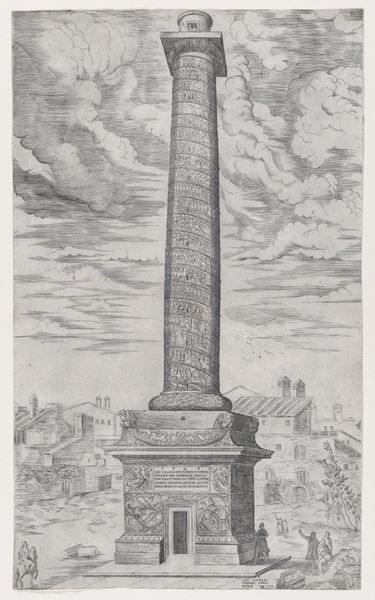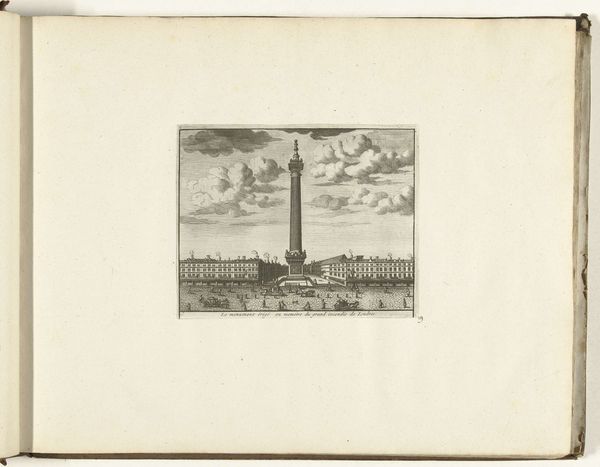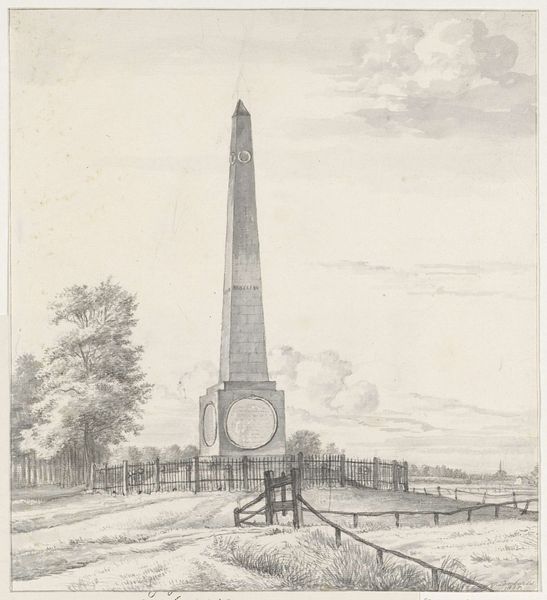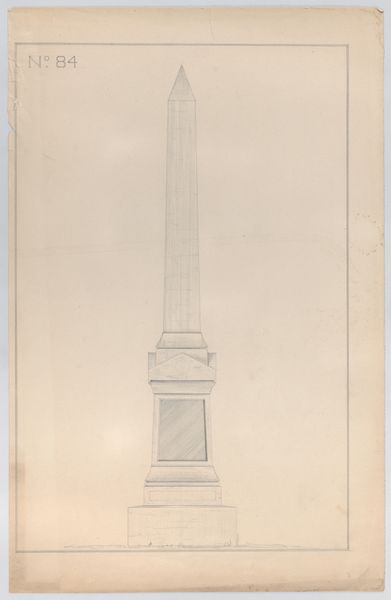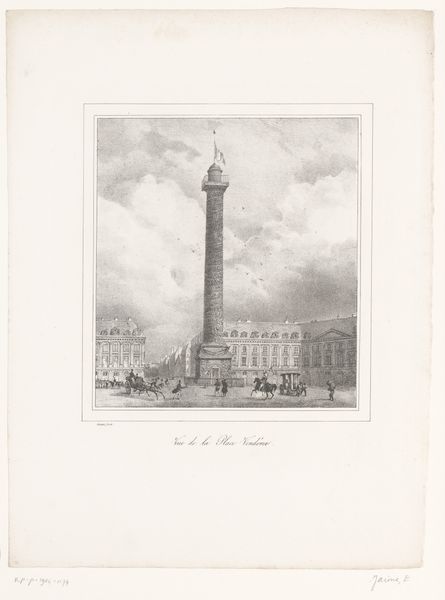
Speculum Romanae Magnificentiae: The Vatican Obelisk 1530 - 1580
0:00
0:00
drawing, print, engraving, architecture
#
drawing
# print
#
form
#
geometric
#
line
#
cityscape
#
history-painting
#
italian-renaissance
#
engraving
#
architecture
Dimensions: sheet: 19 5/16 x 11 5/8 in. (49 x 29.5 cm) mount: 22 1/8 x 16 3/4 in. (56.2 x 42.6 cm)
Copyright: Public Domain
Curator: This engraving, part of a series titled "Speculum Romanae Magnificentiae," depicts the Vatican Obelisk. It was created sometime between 1530 and 1580 by an anonymous artist, showcasing the architecture of Rome during the Renaissance. Editor: Wow, my first impression is just one of sheer verticality, but something feels a bit unsettling. Perhaps it’s the weight of those swirling clouds juxtaposed against the rigid form? Curator: Absolutely, and that contrast speaks to the piece’s tension. The production of prints like these was quite complex involving skilled labor, expensive materials, and intricate processes of reproduction, turning the Roman landscape into something to be possessed, viewed, and circulated. Editor: Possessed…that’s a strong word, but it feels right! The level of detail is fantastic. Look at the figures at the base—dwarfed, almost irreverent, next to that needle pointing heavenward. Almost as if they're ants constructing a strange colony at its base, going about their tiny existences while completely unconcerned. Do you think it speaks to ambition, or the transience of human existence? Curator: The engraving likely served multiple functions. It documented and celebrated Roman power while also creating a market for collectible images. Prints like these weren't merely aesthetic objects; they were commodities. The labor of the artist and printmaker is inseparable from the networks of trade and consumption. Editor: Hmmm, the consumption part rings true. I get a feeling of the artist both revering and mocking grand ambition at once; creating something monumental that others can appreciate at an approachable scale in the everyday. Perhaps the act of owning such a reproduction satisfies a particular hubris? Curator: You’re right, its circulation changed its meaning! The engraving itself participates in the power dynamics it depicts, shaping and distributing visions of Roman authority across Europe. And we mustn’t overlook that this authority was materially dependent on the skill and labor of its image-makers. Editor: So much is embedded here – the practical considerations of circulation married to the monumental aspirations. It’s a curious tension! I'm starting to appreciate the print itself and seeing it not merely as documentation. It offers a glimpse into a very self-aware relationship to the city and the nature of ambition.
Comments
No comments
Be the first to comment and join the conversation on the ultimate creative platform.
